Next week is the Autumn Equinox! This is the perfect time to set an intention for how you want to feel for the rest of the year.
October, November, and December are traditionally busy months filled with stress, activity, and the potential for relationship dynamics to deteriorate. Not to mention there is a presidential election coming up…(like you could possibly forget right now).
Set the tone for the end of your year now—welcome Autumn with a calm mind and create space for possibility, hope, and joy. When you feel overwhelm, anxiety, or burn-out creeping in, come back to this yoga nidra practice to remind you of the beauty, peace, and comfort this season can offer.
This yoga nidra practice is the first in a series of seasonal practices I’ll be sharing to help you reconnect and align with the rhythms of nature and your authentic Self.
What is yoga nidra
Yoga nidra is a form of guided meditation. Nidra means sleep. The power in this practice comes from its ability to help you consciously relax. During this practice, you enter into a liminal space; your body mimics the deep rest of sleep but your mind remains alert. In scientific terms this is called the hypnagogic state—between waking and sleeping. In this state practitioners access the unconscious mind where repressed thoughts, emotions, and feelings get stored. Working through old patterns can help you release them permanently. This is “letting go” in action. All of the mental/emotional processing happens while the body remains in a relaxed state, which not only makes the mind-dump feel safer, but also helps you awaken from a yoga nidra practice feeling rejuvenated.
The benefits of yoga nidra
There are many benefits of yoga nidra and this particular yoga technique has been widely studied. Benefits include:
Improved sleep
Relief from symptoms and pain associated with pregnancy and childbirth
Reduced stress & anxiety
Relief from chronic pain
Increased learning ability
Increased focus
Sharpened memory
Improved mood
Relief from headaches
Relief from symptoms associated with depression
Relief from symptoms associated with PTSD
Recovery from addiction
You can view a list of current and historical research and the benefits of yoga nidra here and here.
Tips for practice
When I first started practicing yoga nidra I didn’t like it. It felt uncomfortable but I didn’t understand why. Turns out rediscovering negative thoughts and limiting beliefs was not particularly pleasant. Now, the feeling of waking up from a yoga nidra practice is one of my favorite feelings in the world. The level of deep rest I get from this practice is unmatched but it did take some time to get there. I discovered that there are different flavors of practice and found the ones that make me feel good. Give yourself grace and have patience. As with any yoga practice, the benefits continue to accrue over time. If you don’t like this particular practice, keep an open mind and try a different one later.
leads incredible yoga nidra practices that she sometimes opens to free subscribers for a limited time :).Here are some tips for practicing:
Yoga nidra is best practiced lying down to ensure that you can completely relax. If you can’t lie down, you can practice in whatever position feels most comfortable to you.
I highly encourage props. Pillows under your knees will keep your low back comfortable. Put a pillow or folded blanket underneath your head. Use an eye covering (it feels so luxurious). I also encourage covering yourself in a blanket so you don’t get cold.
If you fall asleep, it’s okay. Even though the ultimate goal of yoga nidra is to stay awake, it’s highly likely you’ll fall asleep when you first start practicing. Trust that your body is getting exactly what it needs, no matter what happens.
Yoga nidra can be practiced every day or every once in a while. If possible, make it a regular part of your self-care practice.
It’s not uncommon for stuff to come up. By “stuff,” I mean intrusive thoughts or challenging emotions. This is perfectly normal (and a good thing, though it might not feel like it at the time). If what comes up is too much for you to handle on your own, please seek help. Find a therapist who can help you work through the stuff. You’ll feel lighter, happier, and healthier if you do.
It’s also perfectly normal to have peaceful, relaxing sessions and never have to deal with any demons. Either way, trust that you’re getting exactly what you need. You’re doing the work and you’ll see the results manifest subtly over time.
Reflections
It’s always nice to reflect on your experience so you can take what you’re practicing on the mat and apply it in your life. Consider the following questions/journal prompts:
What do you love about fall?
How do you want to feel for the next three months?
What can you do or what practices can you turn toward to help you rediscover that feeling when life starts to get a little hectic and you’re feeling disconnected?
Share your reflections in the comments below!






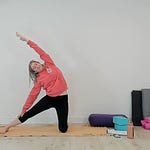

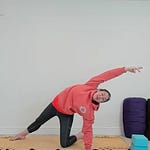



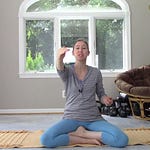

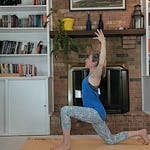

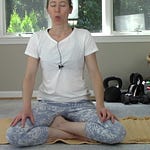

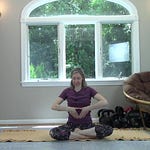
Autumn Seasonal Yoga Nidra